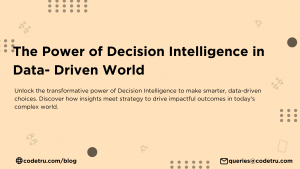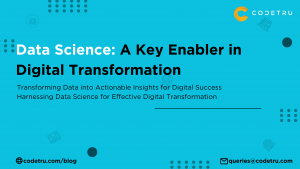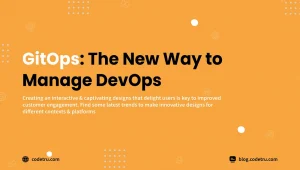In the ever-evolving world of artificial intelligence, Large Language Models (LLMs) have emerged as a force to be reckoned with. LLMs are revolutionizing the way we interact with technology, providing us with a glimpse into the future of Business Intelligence (BI).
In this blog post, we’ll delve into what LLMs are, their applications across various domains, and explore the current state and future prospects of LLMs in Business Intelligence.
What are LLMs and How Are They Used in Generative AI?
At their core, LLMs are sophisticated AI models designed to understand and generate human-like text. They are the wizards behind chatbots, content generation, and natural language understanding. These models are trained on vast datasets, enabling them to process, learn from, and generate text. The larger the LLM, the more data it can handle, making “bigger is better” a common theme in the world of LLMs.
In generative AI, LLMs are used to create new text, images and other data forms based on the one they were trained on.
One of the most prominent LLMs as of 2023 is GPT-4, boasting a staggering 175 billion parameters. Turing-NLG with 17 billion parameters and BERT with 340 million parameters also stand out.
With the launch of ChatGPT, LLMs have gained widespread recognition throughout the world, and it has enabled people and professionals to come up with creative uses to increase their efficiency.
ChatGPT has almost become a personal assistance to many and was just the tip of the iceberg in the world that is slowly filling with different LLM models.
These LLMs are versatile and find applications across diverse domains from healthcare to marketing to businesses. Some of the examples are provided below.
- In healthcare, LLMs assist in medical research by analyzing and summarizing vast volumes of medical literature.
- In education, they power language learning apps and provide personalized tutoring.
- The industries that has benefitted heavily from LLMs is Marketing & Advertising. With marketers using LLMs for generating copy that sells to predicting marketing trend, Generative AI has taken the center-stage in this domain. LLMs also enhance customer engagement through chatbots and content creation.
- Another industry where LLM and Generative AI can take the steering wheel is Business Intelligence. While dealing with enormous amounts of data, it creates a system which leaves no room for human error.
Benefits and Challenges of Using LLMs in Business Intelligence
As with any technology, there are two sides of the coin to LLM as well. While it does offer a plethora of benefits, it also comes with its own set of challenges and difficulties.
- Improved data analysis: LLMs can be used to analyze large amounts of data more efficiently and effectively than traditional methods. This can help businesses to identify trends, patterns, and insights that would otherwise be difficult to find.
- Automated tasks: LLMs can be used to automate tasks such as data cleaning, data preparation, and data analysis. This can free up time for businesses to focus on other tasks.
- Enhanced decision-making: LLMs can be used to generate predictions and recommendations that can help businesses to make better decisions. This can lead to improved efficiency, profitability, and customer satisfaction.
- Increased innovation: LLMs can be used to generate new ideas and concepts that can help businesses to innovate and stay ahead of the competition.
- They enable natural language queries, making data analysis more accessible to non-technical users.
- LLMs can generate insights and narratives from data, simplifying decision-making processes. Additionally, they can create new data sources from text, opening up innovative avenues for analysis.
However, relying solely on LLM for insights and analysis is not suitable for now; challenges do exist.
- The biggest and foremost challenge is that LLMs do not have a brain of their own, so it will only work on existing data and does not always guarantee accurate results that matches the users expectations
- LLMs can be biased, which means that they can generate results that reflect the biases of the data they were trained on. This could lead to inaccurate or misleading results.
- Data quality: The quality of the data is essential for LLMs to be effective. If the data is not accurate or complete, the results of the analysis will be unreliable.
LLMs also require immense computational power and substantial training data. Ethical concerns regarding data privacy and biases in AI-generated content are also noteworthy challenges that need to be addressed.
Current State of LLMs in Business Intelligence
The current state of LLMs in Business Intelligence is promising. They can transform how organizations extract value from their data. As of now, we see a shift towards BI vendors offering LLM-based search functionality that returns data in a tabular format, making it easier to integrate into BI systems.
According to Microsoft Learn, LLM AI models are generally compared by the number of parameters — where bigger is usually better. The number of parameters is a measure of the size and the complexity of the model. The more parameters a model has, the more data it can process, learn from, and generate.
According to Lancaster University, statistics graduates are highly employable, having in-depth specialist knowledge and a wealth of skills. Statistics plays a valuable role in all businesses and enterprises. As a result, a range of industries seek statisticians for roles, such as education, finance, health, manufacturing, marketing, and more.
Future Prospects of LLMs in Business Intelligence
So what does the future hold for LLMs in Business Intelligence. With the pace at which we are making advances in technology, the future certainly looks unpredictable, but in a good way.
Who would’ve thought that in the middle of a deadly pandemic, companies like OpenAI are training a model that will change the way we have been working for decades.
Most of us are wondering and excited as to what is next in line, how far can we go in the nearest future. To give us a portrait of what’s to come, some of the predictions made assure us that we, the tech enthusiasts are in for a treat:
- According to W&B Generative AI Report, LLMs work so effectively, in part, because of their size: They’re trained on immense datasets and thus have a broader understanding than smaller models trained on smaller datasets. This data includes a broad range of themes, genres, languages, etc. but the driving concept is “the more data, the better”.
- The future of LLM in Business Intelligence is bright. LLMs work effectively due to their size and the vast datasets they are trained on. The mantra here is simple: “the more data, the better.” This means that as LLMs continue to grow in scale, their potential applications in BI will expand exponentially.
- According to Forbes, the generative AI boom is changing the landscape of BI offerings. Expect most BI vendors to adopt LLM-based technologies to enhance data querying and reporting capabilities. This shift will enable users to interact with data in a more intuitive and conversational manner.
- Cumul.io predicts that LLMs will revolutionize Business Intelligence by enabling natural language queries, generating insights, and creating new data sources from text. This will empower organizations to extract valuable insights from unstructured data sources, making BI systems more comprehensive and insightful.
Conclusion
In conclusion, LLMs are shaping the future of Business Intelligence by democratizing data access and analysis. Their ability to process and generate human-like text is a game-changer in industries across the board. As we look ahead, the future of LLM in Business Intelligence promises even greater innovations and transformation.
The value and impact of LLMs in Business Intelligence cannot be overstated. They are not just tools; they are the catalysts for a data-driven revolution. As we move towards a data-centric world, LLMs are the guiding lights, illuminating the path to more informed decisions and a brighter future for Business Intelligence.
The future is here, and it’s powered by LLMs. Share your thoughts on the future of LLMs in BI and how you envision these models shaping the business landscape in the comments below.
5 FAQs on The Future of LLM in Business Intelligence
1. What is the role of Large Language Models (LLMs) in business intelligence?
Large Language Models (LLMs) are revolutionizing business intelligence by enhancing data analysis capabilities. LLMs can process and analyze vast amounts of data, generate insights, and provide natural language summaries of complex information. This technology enables businesses to interpret data more effectively, make data-driven decisions faster, and gain deeper insights into market trends and customer behavior.
2. How can LLMs improve data visualization in business intelligence?
LLMs can significantly enhance data visualization by automatically generating descriptive summaries, creating visual reports, and identifying patterns and trends in data. They can translate complex datasets into understandable visual representations, making it easier for decision-makers to interpret and act on the information. This helps in creating more intuitive and insightful dashboards that better communicate key business metrics.
3. What are the benefits of integrating LLMs with traditional business intelligence tools?
Integrating LLMs with traditional business intelligence (BI) tools offers several benefits, including improved data interpretation, enhanced predictive analytics, and more accurate forecasting. LLMs can augment BI tools by providing advanced natural language queries, generating actionable insights from unstructured data, and automating routine analysis tasks. This combination boosts the overall efficiency and effectiveness of data-driven decision-making processes.
4. How do LLMs contribute to advanced analytics and decision-making in businesses?
LLMs contribute to advanced analytics by enabling more sophisticated data analysis techniques, such as sentiment analysis, trend detection, and anomaly identification. They can process and analyze data from diverse sources, including text, social media, and customer feedback, to uncover valuable insights. This enhanced analytical capability supports more informed and strategic decision-making, helping businesses stay competitive and agile.
5. What are the potential challenges of using LLMs in business intelligence, and how can they be addressed?
Challenges of using LLMs in business intelligence include data privacy concerns, model bias, and the need for significant computational resources. To address these challenges, businesses should implement robust data governance policies, ensure diversity in training data to reduce bias, and invest in scalable infrastructure. Additionally, ongoing monitoring and evaluation of LLM performance can help mitigate risks and ensure that the technology delivers accurate and unbiased insights.







